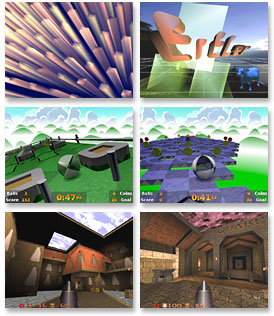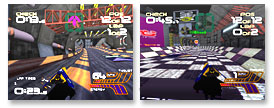|
|

TinyGL
TinyGL was originally created by Fabrice Bellard as a subset of OpenGLŪ for embedded systems and games. It was designed with no hardware acceleration in mind at this time. Only the main OpenGL calls were implemented.
The MorphOS version of TinyGL is only loosely based on the original implementation. It was rewritten to take full advantage of 3D hardware acceleration. Furthermore, it contains several carefully chosen MESA features. TinyGL on MorphOS provides a much richer feature set and surpasses the original's speed at the same time.
| - |
Big
set of implemented functions with high
degree of OpenGLŪ compliance |
| - |
Easy to use system layer API
|
| - |
Highly configurable |
| - |
Fast and robust pipeline which was
tightly optimized for lots of common cases
|
| - |
Non-blocking rendering (no context
locking required)
|
| - |
Multitexturing, mipmapping and palette
texture handling
|
| - |
Cube
mapping |
| - |
Stencil buffer |
| - |
Vertex arrays |
| - |
Display lists |
| - |
User clipping planes |
| - |
Selection buffer |
| - |
Evaluators |
| - |
GLUT implementation |
| - |
All primitives are supported, also
variable size lines and points
(smooth or not).
|
|
The latest MorphOS software development kit can be found at morphos-team.net. |

Goa
Goa is included with MorphOS for compatibility reasons and represents a reimplementation of the Warp3D.library as well as the Warp3DPPC.library. It sits on top of MorphOS' native 3D API and allows to use various applications and games that were primarily written for PowerUP accelerator cards by Phase5 & DCE.
Goa's main features are as follows:
 |
Very
accurate emulation. All known applications that make use of the original library, can be used. |
 |
Extremely
optimized. On the same hardware, Goa is always faster than the original. |
 |
Handles
misaligned data sent by buggy applications without relying on the built-in kernel emulation. |
|

